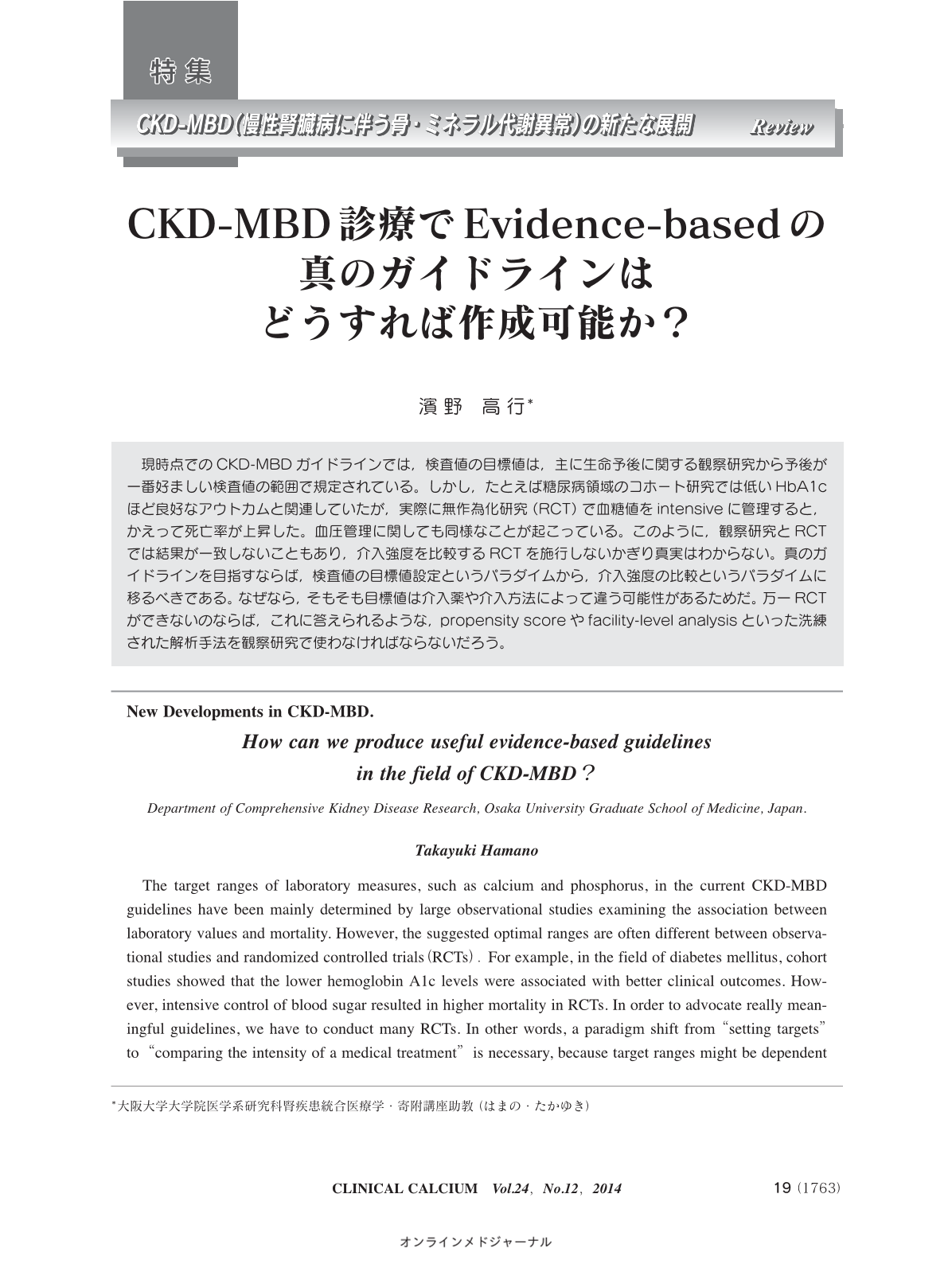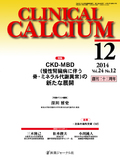Japanese
English
- 有料閲覧
- Abstract 文献概要
- 1ページ目 Look Inside
- 参考文献 Reference
現時点でのCKD-MBDガイドラインでは,検査値の目標値は,主に生命予後に関する観察研究から予後が一番好ましい検査値の範囲で規定されている。しかし,たとえば糖尿病領域のコホート研究では低いHbA1cほど良好なアウトカムと関連していたが,実際に無作為化研究(RCT)で血糖値をintensiveに管理すると,かえって死亡率が上昇した。血圧管理に関しても同様なことが起こっている。このように,観察研究とRCTでは結果が一致しないこともあり,介入強度を比較するRCTを施行しないかぎり真実はわからない。真のガイドラインを目指すならば,検査値の目標値設定というパラダイムから,介入強度の比較というパラダイムに移るべきである。なぜなら,そもそも目標値は介入薬や介入方法によって違う可能性があるためだ。万一RCTができないのならば,これに答えられるような,propensity scoreやfacility-level analysisといった洗練された解析手法を観察研究で使わなければならないだろう。
The target ranges of laboratory measures, such as calcium and phosphorus, in the current CKD-MBD guidelines have been mainly determined by large observational studies examining the association between laboratory values and mortality. However, the suggested optimal ranges are often different between observational studies and randomized controlled trials(RCTs).For example, in the field of diabetes mellitus, cohort studies showed that the lower hemoglobin A1c levels were associated with better clinical outcomes. However, intensive control of blood sugar resulted in higher mortality in RCTs. In order to advocate really meaningful guidelines, we have to conduct many RCTs. In other words, a paradigm shift from “setting targets” to “comparing the intensity of a medical treatment” is necessary, because target ranges might be dependent on the type of the drug or intervention. If we cannot conduct RCTs because of ethical reasons or economic issues, sophisticated analysis methods such as propensity score-based analysis and facility-level analysis should be employed in observational studies.



